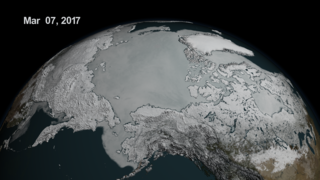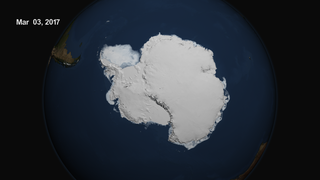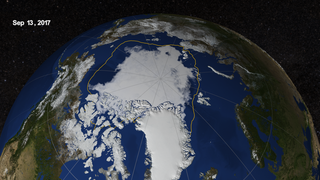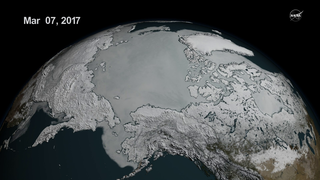Earth
ID: 12480
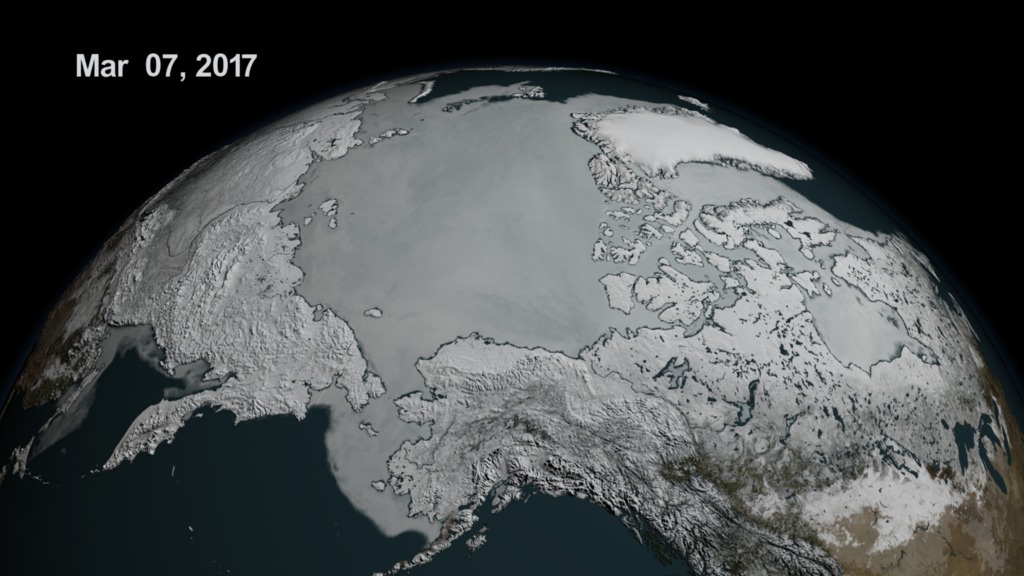
At the north pole, Arctic sea ice reached a record low wintertime maximum extent on March 7, 2017. At the south pole, sea ice around Antarctica hit its lowest extent ever recorded by satellites at the end of summer in the Southern Hemisphere on March 3. The combined Arctic and Antarctic sea ice numbers were at their lowest point since satellites began to continuously measure sea ice in 1979 – the equivalent of having lost a chunk of sea ice larger than Mexico. Scientists at NASA and the NASA-supported National Snow and Ice Data Center (NSIDC) in Boulder, Colorado use data from multiple satellites to monitor sea ice. The visualizations here use data from the AMSR2 instrument aboard the Japanese Suzaku satellite. They show the ice floating on top of the Arctic Ocean and surrounding seas shrinks in a seasonal cycle from mid-March until mid-September. As the Arctic temperatures drop in the autumn and winter, the ice cover grows again until it reaches its yearly maximum extent, typically in March. The ring of sea ice around the Antarctic continent behaves in a similar manner, with the calendar flipped: it usually reaches its maximum in September and its minimum in February. Watch the videos to learn more.
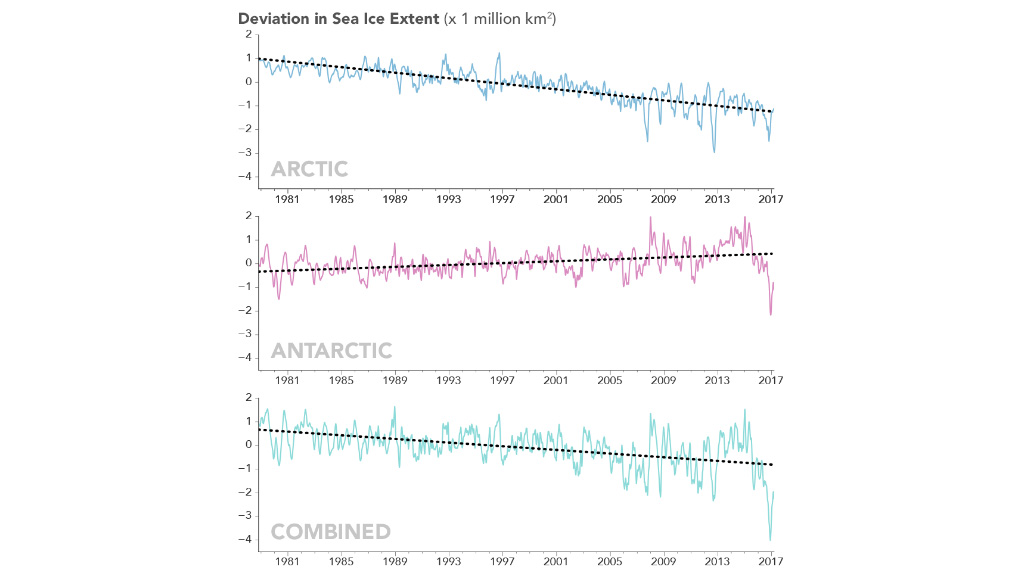

Shrinking Sea Ice



Source Material
Related Stories
For More Information
Story Credits
Lead Visualizer/Animator:
Lori Perkins (NASA/GSFC)
Lead Producer:
Kathryn Mersmann (USRA)
Lead Scientists:
Walt Meier (NASA/GSFC)
Claire Parkinson (NASA/GSFC)
Scientist:
Robert Gersten (Wyle Information Systems)
Lead Writer:
Maria-Jose Vinas Garcia (Telophase)
Lori Perkins (NASA/GSFC)
Lead Producer:
Kathryn Mersmann (USRA)
Lead Scientists:
Walt Meier (NASA/GSFC)
Claire Parkinson (NASA/GSFC)
Scientist:
Robert Gersten (Wyle Information Systems)
Lead Writer:
Maria-Jose Vinas Garcia (Telophase)
Please give credit for this item to:
NASA/Goddard Space Flight Center Scientific Visualization Studio
Chart courtesy Joshua Stevens/NASA Earth Observatory
Photo courtesy John Sonntag/NASA/Operation IceBridge
NASA/Goddard Space Flight Center Scientific Visualization Studio
Chart courtesy Joshua Stevens/NASA Earth Observatory
Photo courtesy John Sonntag/NASA/Operation IceBridge
Short URL to share this page:
https://svs.gsfc.nasa.gov/12480
Keywords:
SVS >> HDTV
SVS >> App
NASA Science >> Earth
https://svs.gsfc.nasa.gov/12480
Keywords:
SVS >> HDTV
SVS >> App
NASA Science >> Earth
